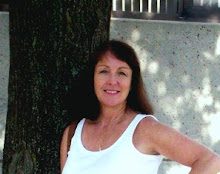Carlson, 1997
Much like other authors we have read this semester, Carlson argues that those with the power in this country, the straight, white males, continue to marginalize the rights of others in the community who are unlike themselves, thus keeping them out of the center of power and on the sidelines. To attain this goal, Carlson's perspective is that gay and lesbian citizens are represented by the culture of power as not normal, having “deviant and pathological” behaviors This maintains the status quo of the privileged. He describes a public school culture as aiding and abetting this disenfranchisement by allowing a lack of discourse in the classroom about the differences and rights of gay people to self expression. As he reminds us, the formation of self is limited in part by the culture in which one lives. Without an honest and open discourse abut the differences and the rights of gay people, neither the gay person, nor the straight person will have the kind of education which leads to a true democratic community.
As he notes, in the last ten years their has been a trend toward “the notion of a community of difference and diversity”, however, he believes that public schools need to take a formative role in creating a dialogue to break the silence that holds back children from forming their identity without the cultural stigmas that prevents them from “becoming somebody” rather than a product of the normalized culture. Without an identification to a gay culture or community, gay young people will have no understanding of themselves in relation to others and their own construction of self. It will always be dictated by the culture of power. Also, without this dialogue, straight children will not be able to see beyond the stigmas created by the culture of power. This, Carlson argues, is the way straight men separate themselves from women and gay men. In a patriarchal society, it is necessary for straight men to view gay men as “feminized men”, akin to women, rather than their equals.
Carlson's “Now What?” is to have a public dialogue with the school districts and the local citizens to create a curriculum that exposes children to information that “clarify differences”. He believes that this dialogue is necessary as part of a multicultural education to protect the rights of minorities, in this case the individual freedom of gay and lesbian people and the creation of a true democratic community with the possibility of building a coalition among the citizens of the country.
Subscribe to:
Post Comments (Atom)

I, too, think about these issues as ones of margins and centers, voice and silence. And like Johnson, dialogue is the space to break that silence!
ReplyDelete